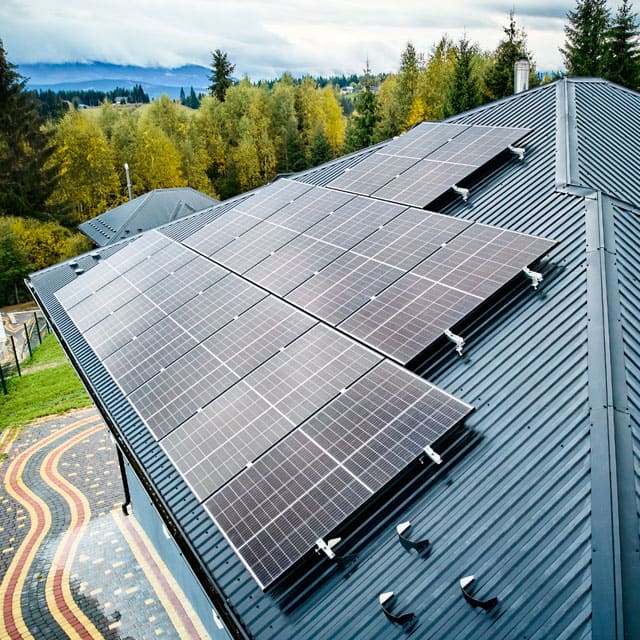The New Engine for Energy Transition: How FSP 100kW PCS Builds a Resilient Microgrid (Part 1)

Author: FSP Group
Chapter 1: The New Engine for Energy Transition—Why Enterprises and Power Grids Need a 100 kW Power Conversion System
With the rapid advancement of global energy transition and net-zero carbon policies, the share of renewable energy on the grid increases each year. The intermittent nature of renewables like solar and wind poses significant challenges to grid stability, requiring reliable energy storage and regulation equipment to ensure power quality. According to Taiwan’s Bureau of Energy, renewable generation is projected to reach 30% by 2030, prompting the grid to evolve from a one-directional supply model into a highly flexible, multi-source controlled system. In this transformation, the Power Conversion System (PCS) serves as the “engine” of the energy transition, offering real/reactive power regulation, grid-connected/off-grid switching, and energy storage integration.
At the same time, changes in electricity pricing and consumption patterns have increased costs for businesses. Implementations of Time-of-Use (TOU) and demand-based pricing pressure enterprises to adopt equipment that can perform peak shaving, valley filling, and demand response. This creates huge market demand for intelligent devices capable of “controlling, converting, and storing” electricity. PCS provides a solution—it stores electricity when rates are low and discharges during peak tariffs, reducing both demand and base charges, clearly demonstrating its value.
In 2021, Taiwan experienced large-scale blackouts—‘5/13 Blackout’ and ‘3/03 Blackout’—leaving over 4 million and 1 million households without power, respectively. These outages halted operations in businesses, hospitals, and critical infrastructure, severely impacting the economy and public welfare. These events underscored that reliance on a single grid source is insufficient for a modern, electricity-dependent society. A behind-the-meter energy storage architecture has become the best way for enterprises to enhance operational resilience and disaster recovery, with PCS at its core.
On the international stage, the EU’s Carbon Border Adjustment Mechanism (CBAM) is now in effect. Going forward, Taiwanese exporters to Europe must provide product carbon footprints and proof of green energy usage. When paired with renewables and commercial energy storage systems, the FSP 100 kW PCS helps enterprises log traceable green electricity usage, support ESG reporting, and strengthen competitiveness in global supply chains.
In summary, the 100 kW PCS has transformed from a simple power converter into the technological heart of the energy transition and a pillar of grid resilience. As a leader in Taiwan’s power and energy conversion sector, FSP has introduced this highly efficient, smart-controlled, modular, and internationally standardized PCS to drive both corporate energy upgrades and national grid stability.
Chapter 2: From Energy Conversion to Resilient Power Supply—How the 100 kW PCS Operates
FSP’s 100 kW PCS supports bidirectional AC/DC energy conversion and is purpose-built to integrate energy storage batteries with grid operations. It’s more than just a power bridge; it's the “central control brain” maintaining supply stability and resilient operation. As grids increasingly incorporate intermittent renewables, FSP PCS—with its active regulation and autonomous operation features—becomes indispensable in modern power systems.
Its core architecture comprises three key modules:
- Bidirectional Converter
- Controller Unit
- Communication Module
On the DC side, the PCS connects to lithium battery modules, monitored by a Battery Management System (BMS). On the AC side, it interfaces with Taiwan Power Company’s grid or microgrids, dynamically regulating energy flow. It enables off-peak charging and peak discharging according to energy management strategies, achieving peak shaving and valley filling. With built-in P‑Q (real and reactive power) compensation and power-factor adjustment, the PCS can respond instantly to voltage and frequency fluctuations, preserving power quality.
Furthermore, the FSP PCS supports both grid-following and grid-forming control modes. Under normal conditions, it operates in grid-following mode; in the face of a grid fault, it seamlessly switches to grid-forming mode, becoming the primary power source for a standalone microgrid. Its black-start capability allows it to energize batteries and loads even during a total blackout, assuring uninterrupted power for critical facilities.
When the utility grid is stable, the system synchronizes with grid voltage waveforms. Upon detecting a blackout or major disturbance, it switches to grid-forming mode, autonomously generating stable frequency and voltage via its control logic and reference signals—becoming the “core power source” of the local microgrid.
This “dual-mode switching” and “autonomous startup” functionality epitomize a truly resilient power architecture. Even in an all-out blackout, the PCS can perform a black start, powering essential systems—lighting, servers, air conditioning, communications—ensuring stability for hospitals, data centers, and semiconductor facilities.
Chapter 3: A Blackout Awakens the World—Why Energy Storage and PCS Are Essential for Resilience
In April 2025, an unexpected nationwide blackout on the Iberian Peninsula alarmed the global energy security sector. Spain and Portugal lost approximately 15 GW of load within just five seconds—about 60% of national demand. Spanish Prime Minister Pedro Sánchez described it as “one of the most impactful infrastructure failures in history,” prompting an urgent reassessment of Europe’s energy vulnerabilities.
During the blackout, hospitals lost power, traffic signals failed, communication networks collapsed, and some industrial furnaces malfunctioned—causing millions in equipment damage and production halts. It was more than a technical failure; it was a wake-up call on systemic vulnerability.
Had key Portuguese cities and industrial zones deployed distributed microgrids with PCS and storage, the consequences could have been far less severe. Smart energy systems not only increase supply reliability but also act as “autonomous power islands” during emergencies. Specific benefits include:
- Reliable power for critical infrastructure: Hospitals, communication hubs, and traffic control systems could auto-enable off-grid mode and sustain minimum operations via PCS and storage.
- Minimized business losses: Factories and data centers can implement zoned microgrids to support key equipment and production lines independently, significantly reducing both downtime and economic losses.
- Distributed resilience: Multiple FSP PCS units can parallel to create community-scale microgrids, reducing dependence on centralized grids and maintaining autonomous operation during failures.
- Promoting energy autonomy: Building autonomous, controllable storage-based microgrids enhances local resilience against extreme weather or geopolitical risks.
As climate events grow more frequent and geopolitical instability intensifies, energy supply becomes a strategic concern—touching national security, industrial sustainability, and societal stability. FSP’s 100 kW PCS, with its flexible renewable integration, grid-forming ability, and black start, is vital for Taiwan’s energy resilience and infrastructure protection.
If Taiwan experiences major outages during typhoons or earthquakes, FSP PCS paired with commercial storage can instantly provide autonomous startup and zoned power support to hospitals, financial/data centers, and other critical sites—significantly reducing recovery time and damage.
Conclusion
The Iberian blackout wasn’t just an accident—it highlighted the world’s overreliance on centralized grids and lack of adequate storage. FSP’s PCS systems are the foundation of tomorrow’s distributed energy storage and resilient microgrids, enabling Taiwan—and the world—to stay powered in future crises.
From Taiwan’s grid transformation to Europe’s blackout warning, energy resilience is now essential for business survival. FSP’s PCS technology proves its strategic value both technically and practically. In the next part, we will dive deeper into the technical features and real-world applications of the FSP PCS, demonstrating how it delivers energy value and economic benefits in actual deployments.
Related Articles
About FSP
FSP Group is one of the global leading power supply manufacturer. Since 1993, FSP Group has followed the management conception “service, profession, and innovation” to fulfill its responsibilities as a green energy resolution supplier.




